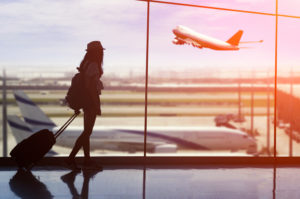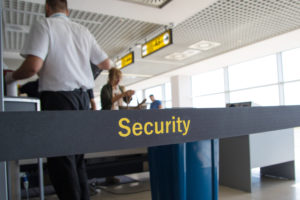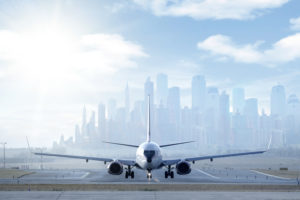Using your frequent flier miles to upgrade can be really confusing, impossible or not worthwhile. Confusing because the airlines have different rules, which seem to change at a whim; impossible because often there are no seats available for upgrading on popular routes, even if you plan months ahead; and not worthwhile because airlines often require that you buy one of their more expensive fares to be eligible and, to add to the insult, now levy expensive co-pays of up to $1000 round-trip, plus miles, to sit up front (that's in addition to the other frequent flyer fees they charge).
Even so, sometimes the effort is worthwhile. Last year, I flew from New York to Los Angeles, and thought it would be pleasant to fly business class on one of United's PS (as in Premium Service) nonstop flights. Searching on Expedia.com, I discovered that these flights carry a premium price: at the time, about $2050 round-trip compared to Delta's $1500 business class fares. But I also discovered that I had 30,000 miles in my MileagePlus account, just enough for a round-trip upgrade, and, using a site called ExpertFlyer.com, identified which United flights were eligible for upgrade.
ExpertFlyer
(membership starts at $4.99/month) works with several major airlines (regrettably, of the larger US carriers, only American and Delta, and no longer with United), which make their real-time upgrade inventory available to subscribers. The service allows you to figure out the lowest priced fare class eligible for upgrade, and shows which flights have upgradeable seats at that fare.
(membership starts at $4.99/month) works with several major airlines (regrettably, of the larger US carriers, only American and Delta, and no longer with United), which make their real-time upgrade inventory available to subscribers. The service allows you to figure out the lowest priced fare class eligible for upgrade, and shows which flights have upgradeable seats at that fare.
The cheapest economy fare on my dates of travel was an economy fare of about $230, but only a fare starting at $450 was upgradeable. Still, I preferred "spending" 30,000 miles for $1600 of value rather than 25,000 miles for $230 of value (the price of the cheapest economy fare).
But it's not always that easy to snag an upgradeable seat at a reasonable fare. Over the last year or two, the major US-based airlines have been tinkering with their upgrade policies, changing mileage requirements, the eligible fare classes, and adding fees. Worse, they've been eliminating flights, reducing seat availability. Here's an update of what to expect.
American
American levies a $100 round-trip co-pay plus 30,000 miles for non-Hawaiian domestic upgrades (half these amounts for one-way; all mileage requirements and co-pays in this article are based on round-trips); there is a $300 co-pay on Hawaiian routes. But virtually all American fare classes are eligible for upgrades. On international flights, most destinations require 50,000 miles plus $700 to upgrade from discounted economy fares (there are no co-pays from full fare economy fares). Fares booked in I, O and Q fare classes aren't upgradeable for travel to Asia, Europe, India or South America; and those booked in I or O are ineligible for travel elsewhere as well.
Continental
Continental also requires co-pays
, but allows all discounted fare classes to be upgraded, subject to inventory controls. Co-pays on flights offering BusinessFirst business class cabins (international flights and nonstops between Houston or Newark and Hawaii) range from $200 to $1000 round-trip; on flights where BusinessFirst isn't offered, co-pays range from $100 to $300, although B, M, H, and K fare classes are exempt (as are "Elite" frequent flyer members).
, but allows all discounted fare classes to be upgraded, subject to inventory controls. Co-pays on flights offering BusinessFirst business class cabins (international flights and nonstops between Houston or Newark and Hawaii) range from $200 to $1000 round-trip; on flights where BusinessFirst isn't offered, co-pays range from $100 to $300, although B, M, H, and K fare classes are exempt (as are "Elite" frequent flyer members).
Delta used to allow upgrades only on more expensive economy class fares, but they recently added less-expensive H, Q and K fare classes. However, other airlines generally offer more fare class choices, a situation mitigated only slightly by Delta's 25,000 mile upgrades on non-Hawaiian domestic routes (compared to the 30,000 required by other airlines). The good thing about upgrading with miles on Delta is that there are no co-pays. But for international travel, only the more expensive, slightly discounted, B
and M fares are available for upgrades.
and M fares are available for upgrades.
United
Effective for award requests made on or after January 12, 2010, the good news is that upgrades on many routes will require fewer miles and more fare classes will be eligible; the bad news is that you'll have to fork over a co-pay of between $100 and $1000 (United had originally scheduled co-pays to kick in this past July, but had a change of heart).
In the current (pre-Jan 12) scheme, on a flight from North America to international destinations you could only upgrade to business class from a fairly expensive M or H economy class fare for 60,000 miles, but with no co-pay. After January 12, that same trip can be upgraded from a much wider range of fare classes for just 40,000 miles, but with a co-pay of $500-$1000, depending on the fare class and destination. Prior to January 12 , fares booked in G class aren't upgradeable; for travel from North America, Hawaii, the Caribbean, and Central America to all other destinations United serves, E, U, Q, V, W, S, T, L, K, and G fares are non-upgradeable.
In the current (pre-Jan 12) scheme, on a flight from North America to international destinations you could only upgrade to business class from a fairly expensive M or H economy class fare for 60,000 miles, but with no co-pay. After January 12, that same trip can be upgraded from a much wider range of fare classes for just 40,000 miles, but with a co-pay of $500-$1000, depending on the fare class and destination. Prior to January 12 , fares booked in G class aren't upgradeable; for travel from North America, Hawaii, the Caribbean, and Central America to all other destinations United serves, E, U, Q, V, W, S, T, L, K, and G fares are non-upgradeable.
On domestic US flights, starting in January, co-pays range from $100-$200 round-trip, but soar to $1000 for upgrading the cheapest fares to or from Hawaii. But all fare classes will be upgradeable. So, while there's greater flexibility, the co-pays may make upgrading an expensive proposition, assuming that seats, which are inventory controlled, are even available. And keep in mind that those "name your own price" fares you bought from Priceline are also ineligible.
US Air
As of August 15, 2009, US Airways no longer required their Dividend Miles members to purchase a minimum fare (it had been $1400) to upgrade to business class. There's currently no co-pay for domestic flights, even to Hawaii. For international travel, you pay 60,000 miles plus $600 ($800 to the Middle East). All fare classes are eligible for upgrade, but that doesn't mean that all seats and flights have seats available.
Maybe you should just buy an upgrade?
So which airline should you earn miles on if you're hoping to upgrade? Let's not bring your frequent flyer status into the discussion, because that would complicate things beyond the scope of this article. The truth is, it's a complicated question, because all the miles and co-pay cash in the world amount to nothing if there are no seats available for upgrades when and where you want to fly, or if the only fares eligible are so expensive that when you add a co-pay, you might as well just buy a discounted business class ticket. Which airlines have the most seats available for upgrades at the lowest possible fares? No one really knows (if the aforementioned ExpertFlyer.com worked with all airlines, we might have a fighting chance at stabbing a guess). But that's the crux of the matter: what difference does it make how many miles you need, or what fare classes are eligible, or what the co-pays are, if the airlines, which are cutting flights and capacity in their premium cabins, really just want to sell you a business or first class seat and aren't making enough available for upgrades? Basically, the only way to make sure you sit up front is to buy your way in.
All products and services mentioned on Airfarewatchdog are independently selected by our team of expert travelers. If you buy something through our links, we may earn an affiliate commission.





